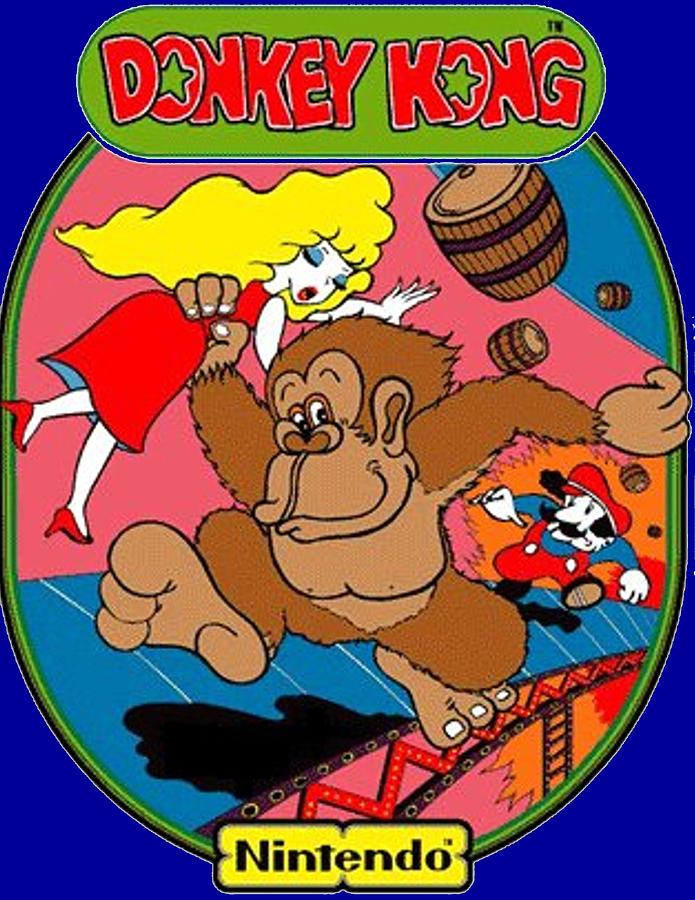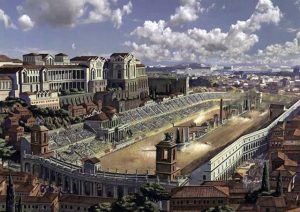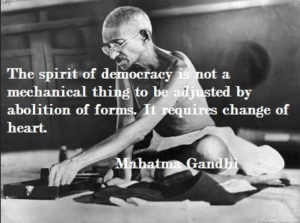Whenever someone, young or old, thinks of video games or video game companies, usually the first thing that comes to mind is either the family-friendly company Nintendo or the man himself, Super Mario.1 But even with the world of video games constantly evolving and changing as time goes on, it’s easy to forget how, back in the days of arcades and other coin machine games, a simple carpenter had the most impact on how we not only design video games, but perceive them as well.2

I want you to imagine this: You’re a newly graduated Arts major in Japan, your fields of interest all revolve around the simple idea of using your creative arts skills to share your ideas with the world through the media of toy making, while also making yourself a handsome income as well. But even back in the 1970s, an Arts degree was still a major cripple in the world of job recruitment, since the majority of employers looking for hired help didn’t see an Arts degree as something worthwhile for their company. That’s the situation Shigeru Miyamoto found himself in when he graduated from the Kanazawa College of Art, as he had ignored his parents’ warnings to not pursue a degree in art, since it was difficult to find a job that would make a substantial income to support him and his family. But Miyamoto stuck to his guns and knew that the creative arts was something he was passionate about. He wanted to pursue the arts as a form of “dream job,” since he was always making all kinds of toys and playing cards in his free time.3
Needless to say, his time in the Kanazawa College of Art was well spent! On top of studying and doing homework, he was also an avid video game player and would find time to play arcade games in his free time. Of course, upon graduating college, things started going south, because his parents were right. Finding a job with an Arts degree was difficult for Miyamoto, especially when he couldn’t find any job that interested him. Fearing the worst, Miyamoto spent the next few years of his life designing, making, and selling all kinds of handmade toys, in an attempt to support himself financially; but it was all disheartening, not only for his parents, but also for himself as well.4

It wasn’t until a few years of unemployment later that Miyamoto’s father introduced him to an old friend of his: the then-president of Nintendo Hiroshi Yamauchi. In the early-to-mid 1970s, Nintendo was nothing more than a simple toy company that sold card games and other toys marketed towards children, and it was because of this that Miyamoto’s father introduced him to Yamauchi, giving him a few samples of the various toys, cards, and other forms of artistic media his son had made in his spare time. It would be an understatement to say that Mr. Yamauchi was anything short of impressed. He hadn’t seen something this creative before in his life, especially something that came from a recent college graduate! In 1977, Miyamoto was hired to work at Nintendo, though he was only given the position of a simple concept and design artist for Nintendo’s toy, card, and gameboard lines at the time.5
Miyamoto was content with the position he had with the company, and was relieved to know he would be able to support himself by using something he felt passionate about. However, as time progressed and new technological advancements were being created, the people of the world weren’t interested in playing with toys, cards, or board games anymore, especially in Japan. Yamauchi knew this, and feared that his company would be forced into bankruptcy if they didn’t find a way to get themselves back into business. With much at stake but little options left, the president turned to the employee who had only been working at the company for three years, and called him in to discuss the idea of moving the company into the media of video games, since physical games and toys were beginning to die out when put against the competition of things such as computers, arcade games, and even other competing companies as well.6
After being in the company for only three years, Miyamoto was tasked with the heavy burden of creating an entirely new video game from the ground up, with little to nothing to work with in terms of budget and licensing. But at that time Yamauchi and the rest of the staff put their faith in Miyamoto, since they knew how passionate and creative he was in terms of creating his own ideas. It was because of this creativity that they hoped that he alone would be enough to make a game profitable enough to spearhead Nintendo into becoming a video game oriented company to compete with rival companies and keep up with the advancing world of entertainment. Of course, even with Miyamoto’s fierce and unwavering determination, that wasn’t enough to keep him from worrying about the more important details in the video making process, particularly the lack of skilled hands in the field of coding, since Nintendo was a strictly toy-based company at that time and contained very few members who knew coding. Miyamoto and the small team he was given were also under constant stress with the various looming deadlines set in place for key components of the game, to make sure they were on track to distribute the game across Japan. They were even under more stress because they were given the entire budget the company had at that time, which was nothing more than a dwindling and shallow pool of money that Nintendo had left. To make matters worse, competition Nintendo had with longtime rivals Namco and Taito in not only the Japanese market but the American market as well, spelt doom for them, as Namco and Taito had already developed hit titles like Pac-man and Space Invaders, and Miyamoto was actually intimidated to make a game idea of his own because of this (not to mention the company didn’t have enough money to buy licensing for Popeye the Sailor Man, a character Miyamoto wanted to base a game around at first).7

But without much time left to worry about purchasing licenses or about how much of the market was dominated by their competitors, Miyamoto came up with the concept for the classic arcade game Donkey Kong (a name that Miyamoto thought roughly translated to “Stupid Ape” in English). The game itself followed the heroic exploits of Mario, an Italian carpenter, on his quest to save his girlfriend from the escaped gorilla Donkey Kong.8
Development went as smoothly as it could, given the team’s current circumstances. A few mechanics of the game had to be rushed due to deadlines, and the fact that the debt Nintendo had was slowly accumulating as a result of producing the game. It was sink or swim at that point, and dropping the Donkey Kong project would do more harm than good at that point in its development. But after one year—one stress and anxiety filled year—the Donkey Kong arcade game was released across Japan in arcades in almost every major city at that time! Thankfully, despite having fierce competition from games like Space Invaders, Pac-man, and other arcade games developed by their rivals, Donkey Kong ended up being a major success, becoming a popular hit in Japan and reeling in enough profit to start moving the game into the West, where its popularity only succeeded the one it had in Japan.9
Upon hitting major success with Donkey Kong, Nintendo decided to send the game over to the west in hopes of achieving the same level of popularity they achieved in Japan. And much like our eastern friends, the west saw Donkey Kong as one of the most revolutionary games of the era. People from all over the United States flocked to their town’s arcades to push in as many quarters as possible to try and scale the various levels set forth to them by Miyamoto himself. The fever of Donkey Kong in America was so widespread and hyped up that it had created something of a cult almost, bringing together professional arcade players from all across the world to compete for the glorious title of the “King of Kong,” aka the one who had achieved the highest possible Donkey Kong score in the entire world.10
- Musa Aykac,“How Nintendo Revolutionized Gaming,” Online Resources, accessed August 27, 2018. https://www.streetdirectory.com/etoday/how-nintendo-revolutionized-gaming-uocflc.html. ↵
- Jennifer Latson,“How Donkey Kong and Mario changed the world,” Time, June 02, 2015. Accessed September 06, 2018. http://time.com/3901489/donkey-kong-anniversary/. ↵
- Nick Paumgarten, “Master of Play,” The New Yorker, June 19, 2017, accessed September 02, 2018. https://www.newyorker.com/magazine/2010/12/20/master-of-play. ↵
- Funk and Wagnalls New World Encyclopedia, 2017, s.v. “Shigeru Miyamoto.” ↵
- Starmen.net, “Game Credits: Shigeru Miyamoto,” accessed September 22, 2018. http://starmen.net/credits/shigerumiyamoto.php. ↵
- Travis Fahs, “The secret history of Donkey Kong,” Gamasutra, July 06, 2011, accessed September 06, 2018. http://www.gamasutra.com/view/feature/134790/the_secret_history_of_donkey_kong.php. ↵
- Travis Fahs, “The secret history of Donkey Kong,” Gamasutra, July 06, 2011, accessed September 06, 2018. http://www.gamasutra.com/view/feature/134790/the_secret_history_of_donkey_kong.php. ↵
- Funk and Wagnalls New World Encyclopedia, 2017, s.v. “Mario.” ↵
- Travis Fahs, “The secret history of Donkey Kong,” Gamasutra, July 06, 2011, accessed September 06, 2018. http://www.gamasutra.com/view/feature/134790/the_secret_history_of_donkey_kong.php. ↵
- Edler Dennis and Frank Dickmann, “The Impact of 1980s and 1990s Video Games on Multimedia Cartography,” Cartographica, Vol. 52 Issue 2 (2017): 168-177. ↵



86 comments
Valeria Perez
As I read this article I honestly thought, “What really matters in this world is how you use your degree and what you learn not necessarily your major.” Obviously some majors are more in demand than others but it all comes down to how creative you are. Miyamoto certainly showed us that! It is interesting to see across articles how things we considered as classics were once the last hope for the company to survive.
Crystal Baeza
This article was well written about a creative and great game designer. I never knew about the first Nintendo game nor about how it came out. It’s interesting how a man completely transformed the game and made something amazing for the gaming world. Miyamoto changed the way games were viewed and now developed future game developers to follow his footsteps and continue his legacy.
Bruno Montes de Oca
Being an avid video game player, I always am a sucker for classics, and nothing beats old Mario and Donkey Kong. Nintendo is one of my favorite companies and hearing how they essentially started from nothing is somewhat astonishing to me seeing how popular and expanded their company is now. Mario, Donkey Kong and Princess Peach are household names everywhere. The endless cycles of fun games never stop from Nintendo and I cannot wait to see what else they come up with in the future.
Antoinette Johnson
This tells a story of how hard work, determination, and sticking to what you love will ultimately achieve success in the end. Miyamoto stuck to his passion for the arts and ended up working for Nintendo. The President of Nintendo was amazed by Miyamoto’s creative design. Even with the shift to media technology, with the company on the line. President Hiroshi and the rest of the company placed complete faith in Miyamoto. Through his creative process, hard work, and unwavering belief he created Donkey Kong and it became a huge success in Japan and in America.
Mariah Garcia
Shigeru Miyamoto was and is still one of the greatest designers for the gaming world. The movie Pixel is a great movie that depicts such achievement of Miyamoto work such as Donkey Kong. But, this article gives such a great man acknowledgment because he started as helping in creating more card games and toys for Nintendo. But, as technology started to advance Nintendo knew that card games and toys were beginning to die out, so Nintendo have Miyamoto the task in creating the first arcade game. Which he did and it became one of the most popular games in history. I do and will always admire the works that Miyamoto did for Nintendo and the classical arcade game and current games that I grew up playing and still play today.
Adam Portillo
Awesome article to read. Kind of made me think back to days where I use to play the Nintendo 64 as a kid. Prior to reading this article I had no knowledge of the history of the first Nintendo arcade game. I feel that a lot of these video game developers set the path for how video games should be developed and they left a legacy that will go on forever.
Madeline Torres
I really enjoyed reading this article! I know for a fact that when I think of video games I think of Mario Kart or Super Mario Bros. It’s amazing to read about the history of Donkey Kong and how this character changed the game, literally. The thought of someone being about to create Donkey Kong and be able to change the way video games are viewed now is amazing. Nintendo takes a huge factor in my childhood and its crazy to read how my childhood video games was made.
Robert Freise
This article gave me a bigger sense on how a gaming company can spark and become popular. I have played many Nintendo games that had Donkey Kong on it and he is one of the most well known characters in the Nintendo series to this today. The wit of Shingeru Miyamoto in terms of how gaming can develop and become very popular for technology advanced young adults and children is very important for the influence of how gaming knowledge can be passed on to younger generations.
Maxx Arizmendi
I enjoyed reading this article. I remember reading about the creation of the first Nintendo game, which was this particular game. I find it interesting that this one arcade game revolutionized video games as we know it today. Also, with these old-school games, there has been an impact for the generation at that time.
Diego Aguilera
I really enjoyed this article because I never knew the back story of Donkey Kong and also the creators backstory and why he wanted to create the game he did. When I think of Nintendo, the first thing I think of is Super Mario and at one point was my favorite games. I do strongly beleive that because of Nintendo video games have been revolutionizing with the world everyday. To look at just the graphics and see how far video games have come is crazy.